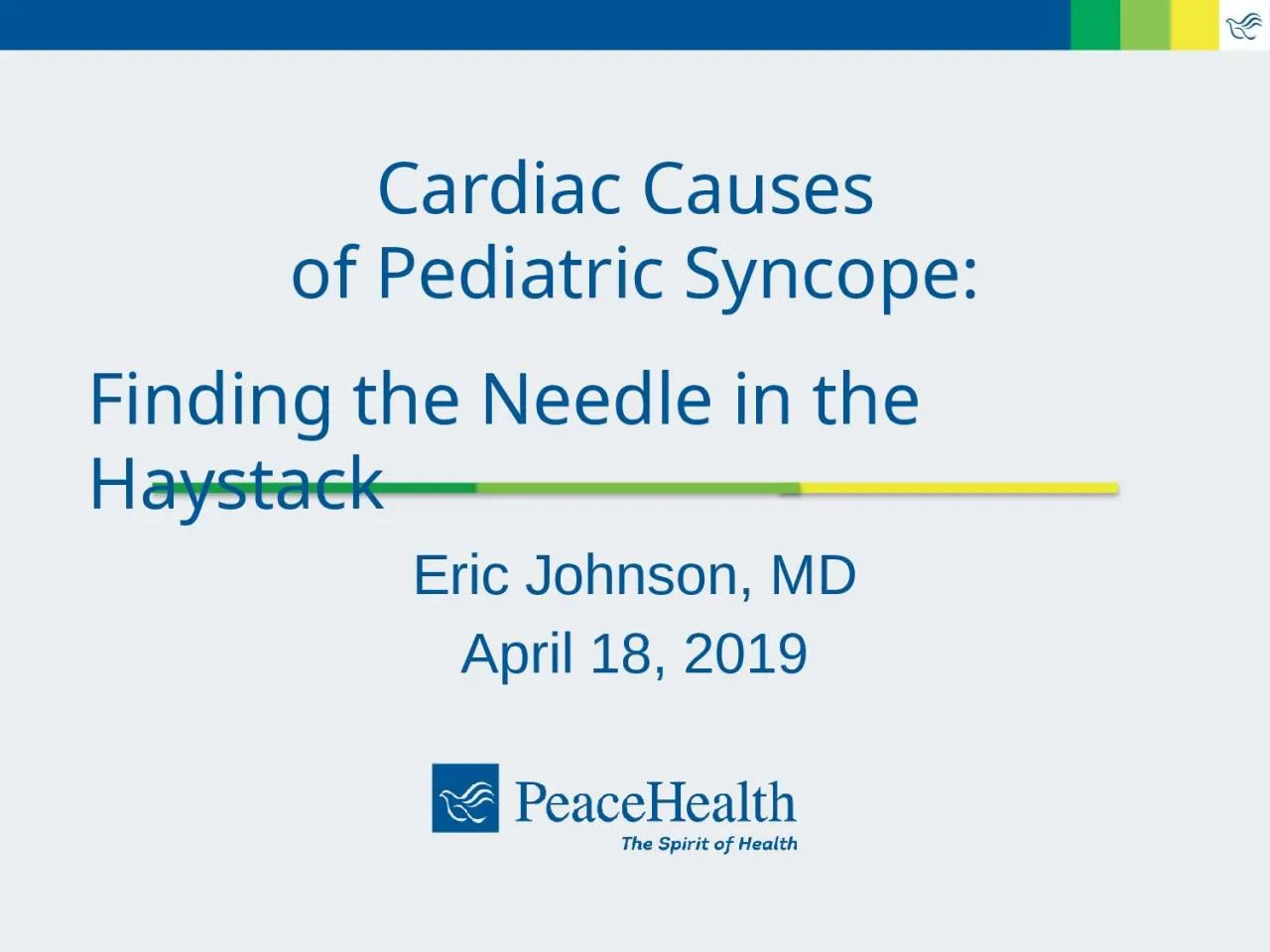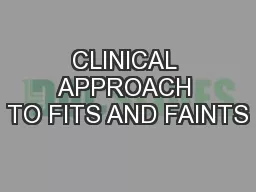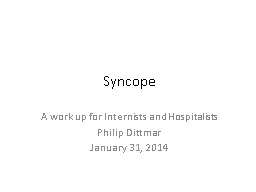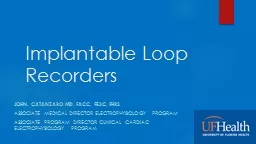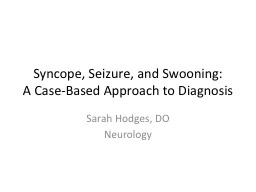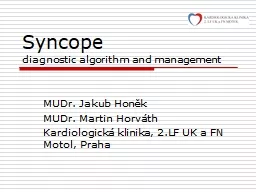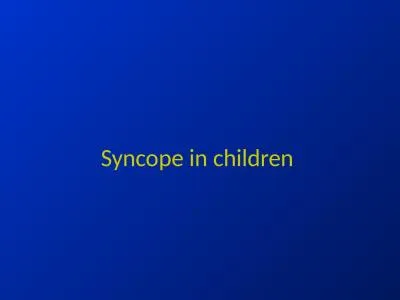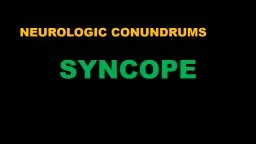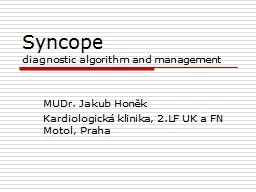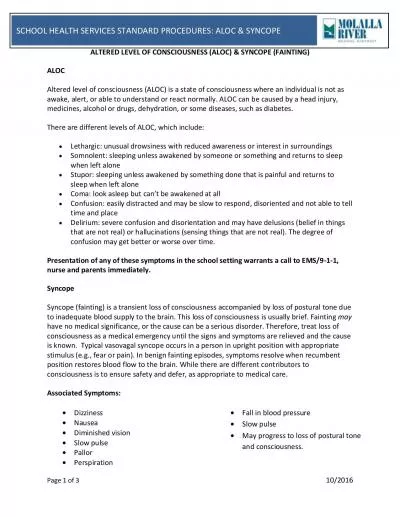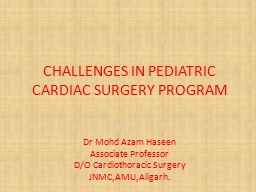PPT-Cardiac Causes of Pediatric Syncope:
Author : eddey | Published Date : 2022-06-01
Eric Johnson MD April 18 2019 Finding the Needle in the Haystack Disclosures None Objectives List the most common causes of syncope in pediatric patients Describe
Presentation Embed Code
Download Presentation
Download Presentation The PPT/PDF document "Cardiac Causes of Pediatric Syncope:" is the property of its rightful owner. Permission is granted to download and print the materials on this website for personal, non-commercial use only, and to display it on your personal computer provided you do not modify the materials and that you retain all copyright notices contained in the materials. By downloading content from our website, you accept the terms of this agreement.
Cardiac Causes of Pediatric Syncope:: Transcript
Download Rules Of Document
"Cardiac Causes of Pediatric Syncope:"The content belongs to its owner. You may download and print it for personal use, without modification, and keep all copyright notices. By downloading, you agree to these terms.
Related Documents

